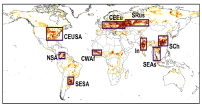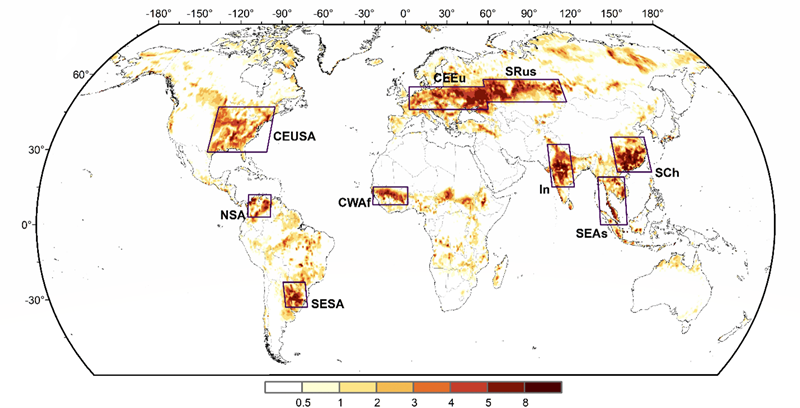Agricultural Flash Droughts
March 29, 2024 09:52 AM

Agricultural Flash Drought Hot Spots
© npj Clim Atmos Sci 7, 73
In their recent publication, CISESS Scientist E. Hugo Berbery and his co-authors examine agricultural flash droughts worldwide and reveal their characteristics and life cycle. The study introduces a flash drought indicator based on soil water availability, which can show rapid depletion rates of soil moisture in the root zone and their impact on vegetation health. Their findings reveal that agricultural flash droughts occur more frequently during the critical growth periods of crops and exhibit a similar life cycle regardless of the climatic regime. A precipitation deficit is the primary cause of the rapid soil moisture depletion, but evapotranspiration also plays a significant role. In an energy-limited environment, evapotranspiration increases rapidly before the onset and decreases rapidly during the intensification period as the system becomes water-limited. After the intensification period, most crops experience water stress, leading to lower yields. Global hot spots for agricultural flash droughts are shown in the figure below.

Figure: Annual frequency of agricultural flash drought events (number of events per decade) from 1960–2020. Hotspots are highlighted with boxes, including northern South America (NSA), central-eastern United States of America (CEUSA), central-eastern Europe (CEEu) and southern Russia (SRus), southern China (SCh), southeastern South America (SESA), central-western Africa (CWAf), India (In), and southeastern Asia (SEAs).
Citation:
Lovino, Miguel A.; M. Josefina Pierrestegui, Omar V. Müller, Gabriela V. Müller and Ernesto H. Berbery, 2024: The prevalent life cycle of agricultural flash droughts. npj Clim Atmos Sci 7, 73, https://doi.org/10.1038/s41612-024-00618-0.
« Back